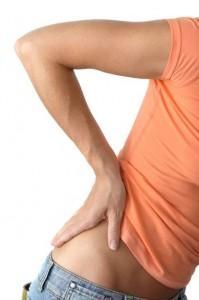
Hip bursitis is mostly characterized by the inflammation of a fluid-filled sac located at the bony part of the hip bone or lateral part of the shaft of the thigh bone. The term “bursae” refers to fluid-filled sacs that are located at areas where muscles, ligaments, and tendons slide across the bones. These fluid-filled sacs act as a gliding surface, thereby preventing friction between the bones and soft tissues. More than 150 bursae are located in the human body. When any of these bursae gets inflamed, one is diagnosed with bursitis. Hip bursitis is characterized by symptoms such as pain in the outer thigh and hip area as well as a painful condition that increases friction in your joints. Stretches and strengthening decrease tightness in muscles that may be contributing to this condition. These exercises target muscles that move your leg at the hip joint. Pain might worsen due to running, walking, climbing stairs, or squatting. Incorrect posture at work or home can also cause bursitis. Bursitis is not serious in nature. It can be easily cured with proper care of the injured or inflamed area. Home remedies are enough to cure the ailment, but if it is recurring frequently, you should surely consult your doctor. Individuals affected by this condition should avoid repetitive activities that can put strain on the hip joint. The first line of defense is rest from irritating activities. The use of painkillers or non-steroid anti-inflammatory drugs (NSAIDs) might be suggested in some cases. A foam roller is also important to use before and after your activity as you find tight areas that need to be kneaded out from tightness caused from your aggravated activity.
In severe cases, administration of corticosteroid injections might help provide relief from pain. Physiotherapy is an important aspect of the treatment. Thus, medical assistance must be sought to learn about the exercises that can help strengthen the muscles and improve the range of motion of the joint. Bursitis is a preventable condition if you remember to do the appropriate stretching exercises before and after you go running or work out at the gym.
If the following home remedies are properly followed, one can find relief from the irritation and inflammation within four to five days. If you rest the body, avoid painful activities such as the running that started the bursitis. Slow down your pace once you start running again and use a regime of NSADS such as ibuprofen, aspirin, and naproxen, and avoid staying in one position such as sitting. An alternating ice and heat regime will also bring down the swelling and pain. For more ideas for exercises for bursitis, check out my Pinterest pages.
References:
https://www.pinterest.com/pin/24418022953261983/
- 1share
- 1Facebook
- 0Twitter
- 0Pinterest
- 0LinkedIn
Christina Chapan
Latest posts by Christina Chapan
- Body Language for Personal Trainers,Teachers and Group Instructors - January 12, 2020
- Allergies + Exercise: An Overview - January 9, 2020
- The Safety of Running Solo - January 5, 2020















